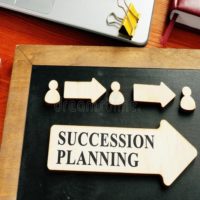It’s called succession planning: the process for identifying and developing the people within an organization, with the potential to fill key business and leadership positions in the future. When implemented incisively, succession planning should be a natural progression. It’s a simple, prudent, practical process; yet recent studies and interviews with business executives and directors show that only 46% of them have a formal succession plan in place. What’s more, only 25% of them said they had an adequate pool of viable candidates for a CEO position. Why is that?
1. Enterprises Don’t Connect Skills and Experience. Organizations often do not make the connection between the skills and experiences required to run the company, and the individual candidates who are best suited to eventually assume senior executive positions. 39% of companies do not have an internal candidate who they deem prepared to immediately assume the CEO position, and only 54% are actively grooming someone for the role.
2. There is No Plan Already in Place. Companies do not have an actionable process in place to select senior executives, and while many believe they have an effective succession plan in place, only 25% report having an adequate pool of successor candidates ready for leadership positions. On top of that, roles in the succession-planning process are not well defined, and companies agree that succession planning involves the combined efforts of the board of directors, the senior management team, and support staff—such as the human resources department—but they do not structure an evaluation process that formally assigns roles to each of these groups, which requires their participation.
3. Companies Misunderstand the Purpose of Succession Planning. Many companies think planning for succession is simply to “reduce risk” rather than to “find the best successors” and generate shareholder value benefits through the identification of strong, appropriate leadership. Succession plans are frequently not connected with coaching and internal talent development programs, so they are treated as distinct activities rather than one continuous program to gradually develop leadership skills in the organization, which also improves employee productivity.
It seems that organisations misunderstand the true nature of succession planning — or do not realise the full benefits of putting an ongoing procedure in place and are therefore reluctant to implement one. Maybe the reason is the amount of development it takes to implement a succession plan seems daunting, and not worth the investment of time and resources. Whatever the hesitation, succession planning is the investment of not only dollars and time, but of effort in high-potential identification, developmental activities, and executive assessment as well. If a company already has an effective strategic workforce strategy in place, implementing a succession plan should be a cakewalk.
Contact us for more information on assessments that can assist in succession planning.


